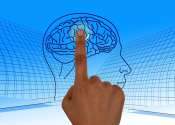Engineers translate brain signals directly into speech
In a scientific first, Columbia neuroengineers have created a system that translates thought into intelligible, recognizable speech. By monitoring someone's brain activity, the technology can reconstruct the words a person ...
Jan 29, 2019
7
10006








